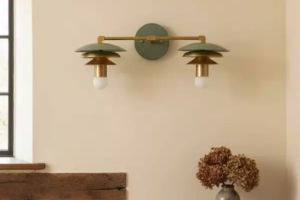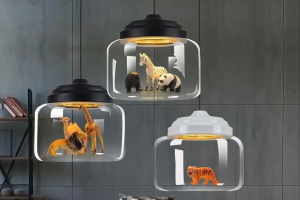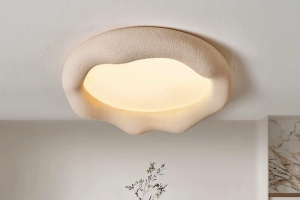Introduction
Sculptural wall lights are a unique form of lighting that combines functionality with artistic expression. These lights can transform any space into a work of art and create a warm and inviting atmosphere. From simple and elegant designs to complex and intricate forms, sculptural wall lights can add depth, texture, and character to your home or workplace. This article will explore the beauty and versatility of sculptural wall lights and how they can enhance your living space.
The Art of Sculptural Wall Lights
Sculptural wall lights are an expression of creativity and artistic vision. They come in various shapes and sizes, ranging from industrial and minimalist designs to elaborate and ornate forms. These lights can be made from a variety of materials, including glass, metal, wood, and clay, and can be customized to suit different styles and preferences.
Some of the most popular sculptural wall lights include those that mimic natural forms like branches, leaves, and animals. For example, a wall light made from metal can be designed to look like a tree branch with leaves making the light source. Alternatively, a ceramic wall light can be molded into the shape of an animal, such as a bird or fish, to create an artistic expression of nature.
Transforming a Space with Sculptural Wall Lights
Sculptural wall lights offer a unique way to transform a space into a work of art. They can be used to enhance the ambiance of a room or create a focal point. For example, a minimalist wall light made from copper or bronze can add a touch of elegance to a contemporary living space. Alternatively, an intricate glass sculpture that emits a diffused light can create a visually stunning centerpiece in a dining or living room.
One of the great advantages of sculptural wall lights is their flexibility. They can be used in a range of settings, from homes and offices to restaurants and hotels. Additionally, they can be installed in different ways, such as individually or in clusters, to create the desired effect.
Choosing the Right Sculptural Wall Light
When selecting a sculptural wall light, it is important to consider the lighting requirements, room decor, and personal preferences. Start by identifying the space where the light will be installed and its function. Is it a task light or an accent piece? This will help determine the best shape, size, and material for the light.
Next, consider the existing decor of the room. The sculptural wall light should complement the room’s style and aesthetics. For example, a minimalist wall light can work well in a modern home, while an ornate glass light may be better suited for a classic or traditional space.
Finally, consider personal preferences. Sculptural wall lights are an expression of personal taste and style, so it is essential to choose a light that resonates with you.
Tips for Installing Sculptural Wall Lights
When installing a sculptural wall light, there are a few tips to keep in mind. First, ensure that the light is mounted securely and level. This will prevent the light from shifting or falling out of place.
Next, consider the height at which the light is installed. For task lighting, it is recommended to install the light at eye level. For accent lighting, the light can be installed higher or lower, depending on the desired effect.
Finally, consider the wiring and power source. Consult with an electrician to ensure that the wiring is properly installed and that the light is connected to a safe and reliable power source.
Conclusion
Sculptural wall lights are a unique and versatile form of lighting that can add depth, texture, and character to any space. From simple and elegant designs to elaborate and ornate forms, sculptural wall lights offer a wide range of options for creating a personalized and artistic lighting scheme. By considering the lighting requirements, room decor, and personal preferences, anyone can transform their living space into a work of art with sculptural wall lights.




More Posts
Stunning Vintage Opaline Lights: Illuminating Homes with Timeless Elegance
Bringing Versatility to Light: Exploring the Benefits of Dual Light Technology
Shining Light on E14 Bulbs: The Ultimate Guide to Understanding and Using Them